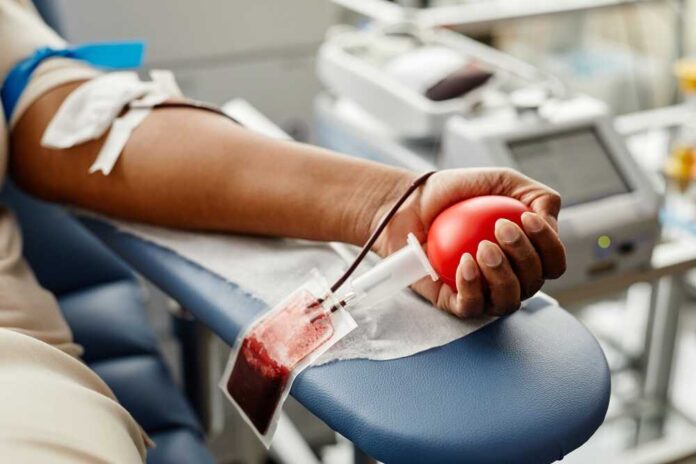
Every day, countless lives are saved through the simple yet powerful act of blood donation.
Hospitals and medical facilities depend on a steady supply of donated blood to treat patients with various conditions, from traumatic injuries to chronic illnesses.
Despite the critical need for blood donations, many people are hesitant to donate due to misunderstandings and fears surrounding the process.
Myth #1: You Can’t Donate Blood If You Have a Tattoo or Piercing
Many people believe that having a tattoo or piercing disqualifies them from blood donation.
In the past, there were concerns about the risk of transmitting infections through contaminated needles. However, most modern tattoo and piercing establishments adhere to strict hygiene standards, greatly reducing the risk of infection.
As long as the tattoo or piercing was done in a licensed facility and has healed completely, donors can typically give blood without any issues. Contact your local blood donation center if you are unsure about their eligibility requirements.
Myth #2: Blood Donation is Painful and Time-Consuming
Some potential donors might be deterred by the thought of a painful, time-consuming process. While there is a slight pinch when the needle is inserted, most donors report that the sensation is brief and tolerable.
The actual blood donation process takes about 10 minutes, while the entire appointment, including registration, screening, and post-donation refreshments, may last around an hour.
The time spent donating blood is a small price to pay for the potential to save lives.
Myth #3: Donating Blood Weakens Your Immune System
A concern some people have is that donating blood will weaken their immune system, making them more susceptible to illness.
This is not the case. Donating blood does not impact your immune system or your ability to fight infections.
Your body replenishes the donated blood volume within 48 hours, and the red blood cells are replaced in a few weeks.
It is, however, recommended to wait at least eight weeks between whole blood donations to give your body ample time to recover.
Myth #4: Donating Blood Exposes You to Infectious Diseases
Another widespread myth is that blood donation puts you at risk of contracting infectious diseases.
The truth is that the equipment used for blood collection, including needles and collection bags, is sterile and used only once before being discarded. This eliminates the risk of infection from contaminated equipment.
Blood donation centers follow strict safety protocols to ensure a clean and safe environment for donors.
Myth #5: Blood Donations Are Only Needed During Disasters
When there is a natural disaster or public health emergency, you’ll tend to see more advertisements for blood drives and blood donation centers.
While it is true that blood supply is crucial during disasters, the demand for blood is a constant, everyday occurrence—no matter where you live.
Hospitals and medical facilities rely on a steady supply of blood to treat patients with various medical conditions. Donating on a regular basis is a great way to help ensure that there is always an adequate supply of blood available for those in need.
Myth #6: Blood Donors with “Rare” Blood Types Are the Only Ones Needed
While it’s true that some blood types are more in demand than others, all blood types are needed for donation.
In emergencies, it’s crucial to have a sufficient supply of every blood type to meet the needs of patients. Blood banks aim to maintain a diverse inventory to accommodate all situations.
By donating your blood, regardless of your blood type, you’re contributing to the pool of resources that can save lives in times of need.






















